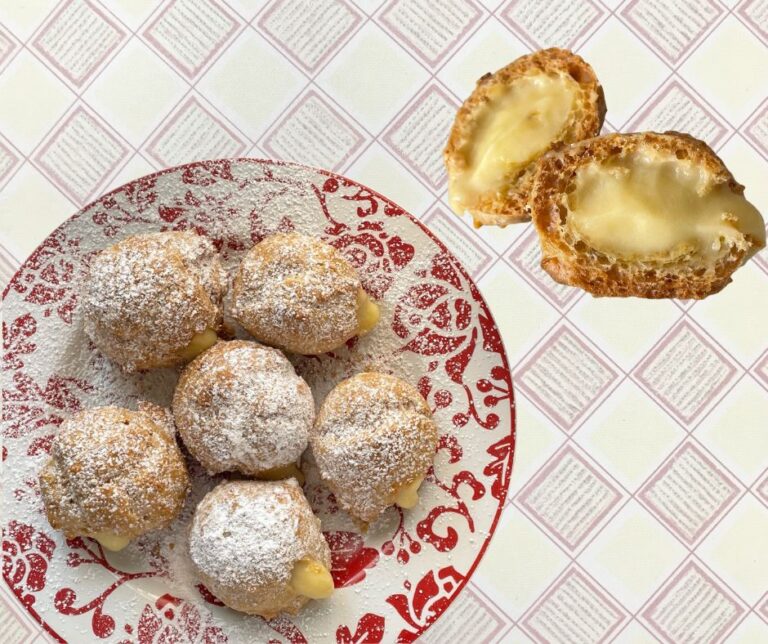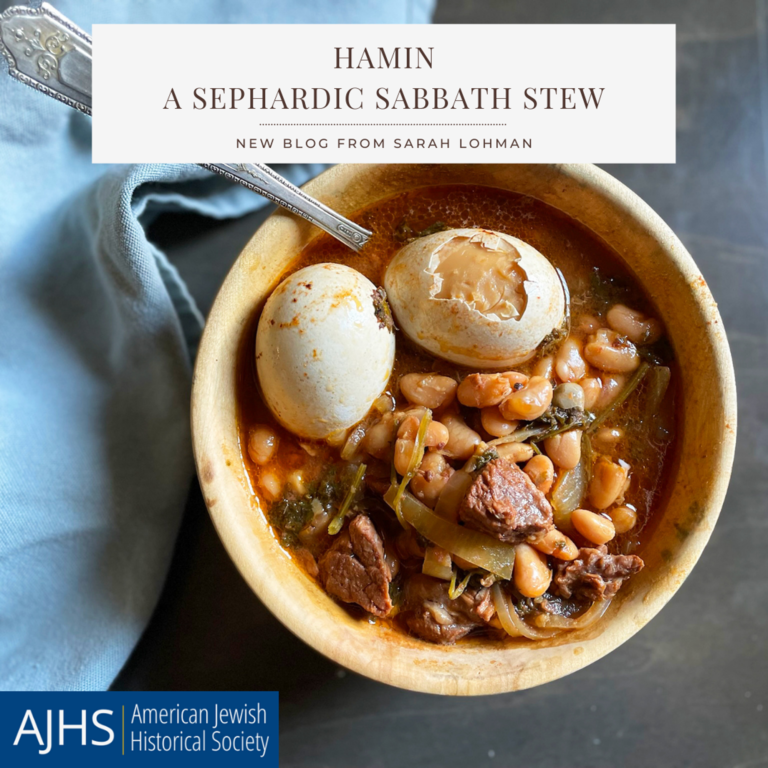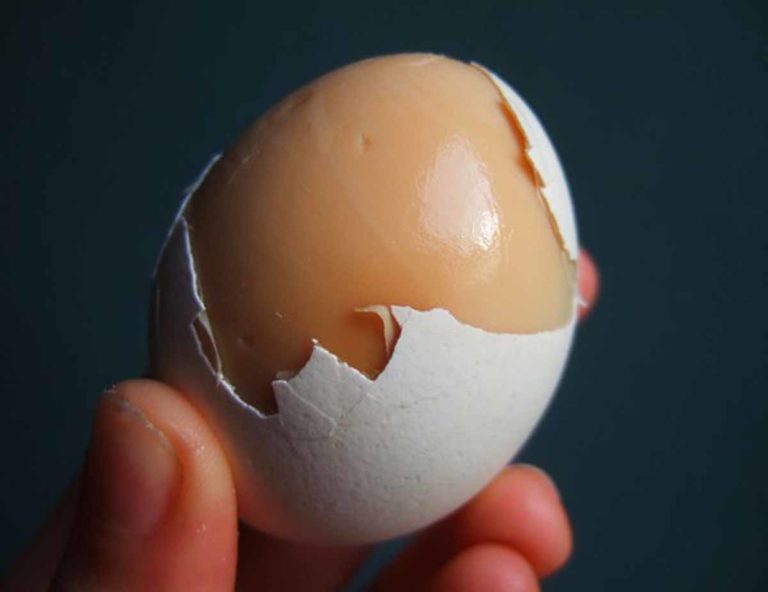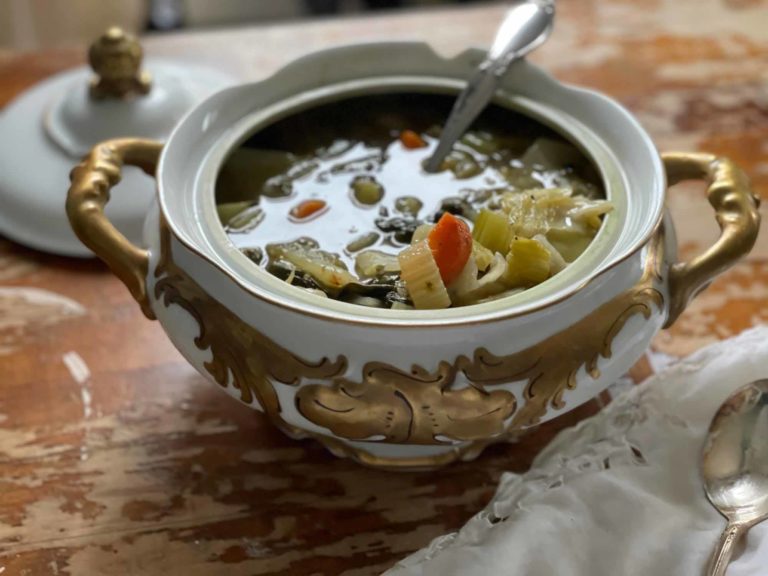
Last month, we explored the earliest English-language Jewish cookbook, The Jewish Manual, or Practical Information in Jewish & Modern Cookery with a Collection of Valuable Recipes & Hints Relating to the Toilette. This cookbook contains the earliest Sephardic recipes published in English.
“Sephardic” comes from the Hebrew word for Spain, Sepharad, and refers to Jews expelled from Spain in 1492, and their subsequent diaspora. They fled far and wide, from Brazil, to New Amsterdam, to modern-day Italy, Greece, and Turkey.
The Jewish Manual contains both sweet and savory Sephardic recipes, such as escobeche, a dish made of fried fish and onions, covered in vinegar, ginger, allspice, cayenne, bay leaves, and lemon; and impanada, another fish dish consisting of layers halibut between slices of potatoes and dumplings, seasoned with pickles, and baked. It’s the sweet recipes in the Manual, however, which really shine. These include several types of bolas, cakes flavored with marzipan and candied citrus peel, dyed with saffron or decorated with gold leaf; sopa d’oro, a “gold” sweet soup colored with cooked eggs yolks and flavored with orange flower water and almonds; macrotes, deep fried slices of French bread sprinkled with sugar; and prenesas, a rich doughnut sprinkled with lemon-flavored sugar.
AJHS has some of my favorite Sephardic cookbooks in its historic cookbook collection, including Cooking the Sephardic Way, a community cookbook published in 1971. An invaluable resource, it collected recipes from the wave of Sephardic Immigrants that left the Ottoman Empire in the 1910s. But these recipes, I realized, were separated from those in the Manual by hundreds of years of settlement in Turkey and Greece, and then decades in America. The recipes in the Manual, lacking the Ottoman influences of Cooking the Sephardic Way, represent a completely different school of Sephardic cooking.

Take, for example, the recipe I decided to recreate: chejados. These are a version of queijadas, a Portuguese sweet tart with an egg-thickened filling. When made with milk, they’re referred to as “Portuguese Milk Tarts.” Versions of this dessert can be found through the extent of the former Portuguese empire; in Macau, for example, they’re called dan tat. Dan Tat can also be found in Chinese bakeries in North America, flavored with almond, ube, or matcha.
The Manual’s chejados have a candied-coconut filling. First, shredded coconut is flavored with rosewater and cooked in a sugar syrup until “perfectly soft.” This results in what its author calls “cocoa nut duce,” a sweet that could be served in small glasses or baked until crispy. Duces, or dulces, are an important part of Sephardic hospitality. When guests come to visit, a la tavla de dulce, or the sweet tray, is brought out, carrying sweets like rose jelly or soft marzipan, served with silver spoons.
In this recipe, the cooked coconut is then mixed with egg yolks. The Manual suggests making a tart crust out of “nouilles pastry.” The book also notes that “a rich puff paste may be substituted.” I baked my coconut filling in a puff paste, and I was extremely pleased with the results. Not overly sweet, the tarts were a pleasure of buttery layers of puff paste combined with the slightly crystallized coconut candy texture of the filling. They are a great treat to have with a morning cup of coffee or an afternoon tea.

Chejados
You can make your own puff paste for this recipe, but you will have equal success (and less of a headache) with store-bought. I feel like many cooks that are unfamiliar with rosewater are also intimidated by it. Make certain to buy an “all-natural” rose water that only lists “distilled rose water” as the ingredient. Cheaper versions are too potent, and lack the subtle, almost unidentifiable flavor a real rosewater adds to a dessert.
Ingredients
- 1 1/2 cups sugar
- 1/2 cup water
- 2 cups unsweetened, shredded coconut
- 1 ½ tsp rosewater
- 3 egg yolks, beaten
- Puff Pastry
Makes about 20 tarts
Directions

- Add sugar and water to a small, heavy-bottomed saucepan. Heat on high without stirring until sugar has dissolved.
- Add coconut to sugar syrup.
- Turn heat to low, add rosewater, and stir.
- Simmer for one hour, stirring every five minutes, until the coconut is soft. The mixture will be a nice toasted brown.
- Remove mixture from heat and cool to room temperature.
- Mix in the egg yolks. The coconut may be fairly hard after it cools; just break it up with a fork while you mix in the egg. This mixture will keep in the refrigerator for up to 24 hours.
- Preheat the oven to 425 degrees.
- Roll out puff paste and use a 3 ¼-inch circular biscuit or cookie cutter to cut out rounds from the dough.
- Pinch the sides to form a cup: either two pinches to create a “boat” shape, or four to make a “hamantaschen” shape.
- Fill the cups with coconut duce.
- Bake for 15-20 minutes until the top of the puff paste is golden, and some of the coconut is deep brown.
- Cool at least 10 minutes before serving.
- Enjoy!






